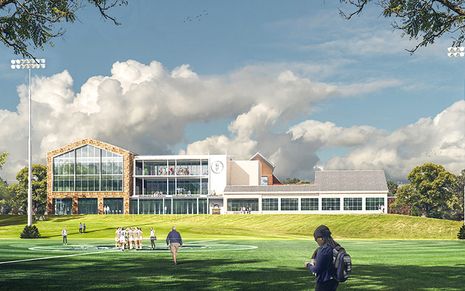Discussions surrounding the student union go back to the 1920s, when the idea for a student center was first proposed and agreed upon. But before construction could begin, the Depression hit. The population of college students declined, funding was scarce, and the plans were shelved. Come the 1930s, to answer a growing need for a student gathering place, the basement of Comenius Hall was converted into a social lounge and candy store. Students, faculty, and staff were welcome to hang out and invited to have coffee and a hamburger. The lounge was called the Emsee for MC. South Campus had an equivalent social space—the Femsee.
Over the next 20 years, as the student population grew, so did the demand for a building on campus dedicated to student cocurricular activity. In the 1950s, students organized their efforts to make it happen, asking their peers to donate $75 a semester for the cause. They presented a check for $400,000 to President Raymond Haupert, and in 1958, the board of trustees approved the building of a student union.
The plan included a cafeteria, snack bar, large dining hall, meeting rooms, and a music-listening room on the first floor. A covered portico extending the length of the building would offer a lookout onto the football field (now John Makuvek Field), and the lower level included a supply store, student mailboxes, storage space, and student rooms featuring table tennis, billiards, and television sets.
Construction began in September 1960 and was due to be completed by September 1961 but was delayed to accommodate the addition of a 300-seat auditorium funded by a gift from local philanthropists Harrison and Myrtie Prosser. Finally on May 6, 1962, the college union building (CUB) was formally dedicated and opened, making it the first student union on a college campus in Pennsylvania.
On May 8, 1969, the CUB was officially renamed the Haupert Union Building (HUB) in honor of Haupert, who had served as president of Moravian College and Theological Seminary since 1944 and announced his retirement.
Over the years, updates to the interior of the HUB have been made including, most recently, renovating the dining spaces, moving the bookstore into the Moravian Book Shop on Main Street, and redesigning the former bookstore space to accommodate student life offices.


